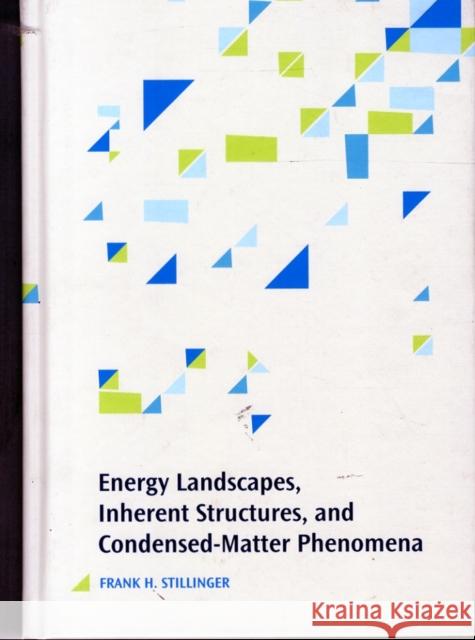Energy Landscapes, Inherent Structures, and Condensed-Matter Phenomena » książka
Energy Landscapes, Inherent Structures, and Condensed-Matter Phenomena
ISBN-13: 9780691166803 / Angielski / Twarda / 2015 / 528 str.
Energy Landscapes, Inherent Structures, and Condensed-Matter Phenomena
ISBN-13: 9780691166803 / Angielski / Twarda / 2015 / 528 str.
(netto: 463,60 VAT: 5%)
Najniższa cena z 30 dni: 482,79 zł
ok. 30 dni roboczych
Bez gwarancji dostawy przed świętami
Darmowa dostawa!
This book presents an authoritative and in-depth treatment of potential energy landscape theory, a powerful analytical approach to describing the atomic and molecular interactions in condensed-matter phenomena. Drawing on the latest developments in the computational modeling of many-body systems, Frank Stillinger applies this approach to a diverse range of substances and systems, including crystals, liquids, glasses and other amorphous solids, polymers, and solvent-suspended biomolecules.Stillinger focuses on the topography of the multidimensional potential energy hypersurface created when a large number of atoms or molecules simultaneously interact with one another. He explains how the complex landscape topography separates uniquely into individual "basins," each containing a local potential energy minimum or "inherent structure," and he shows how to identify interbasin transition states--saddle points--that reside in shared basin boundaries. Stillinger describes how inherent structures and their basins can be classified and enumerated by depth, curvatures, and other attributes, and how those enumerations lead logically from vastly complicated multidimensional landscapes to properties observed in the real three-dimensional world.Essential for practitioners and students across a variety of fields, the book illustrates how this approach applies equally to systems whose nuclear motions are intrinsically quantum mechanical or classical, and provides novel strategies for numerical simulation computations directed toward diverse condensed-matter systems.











